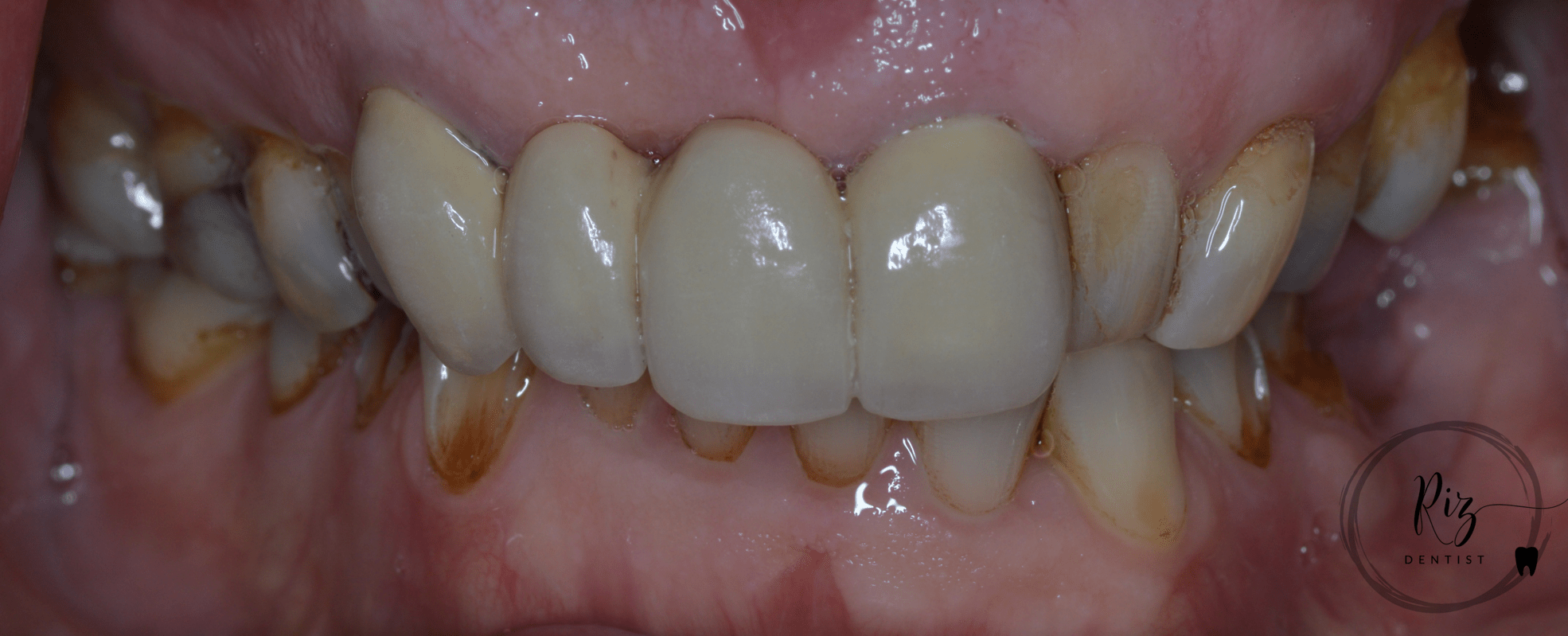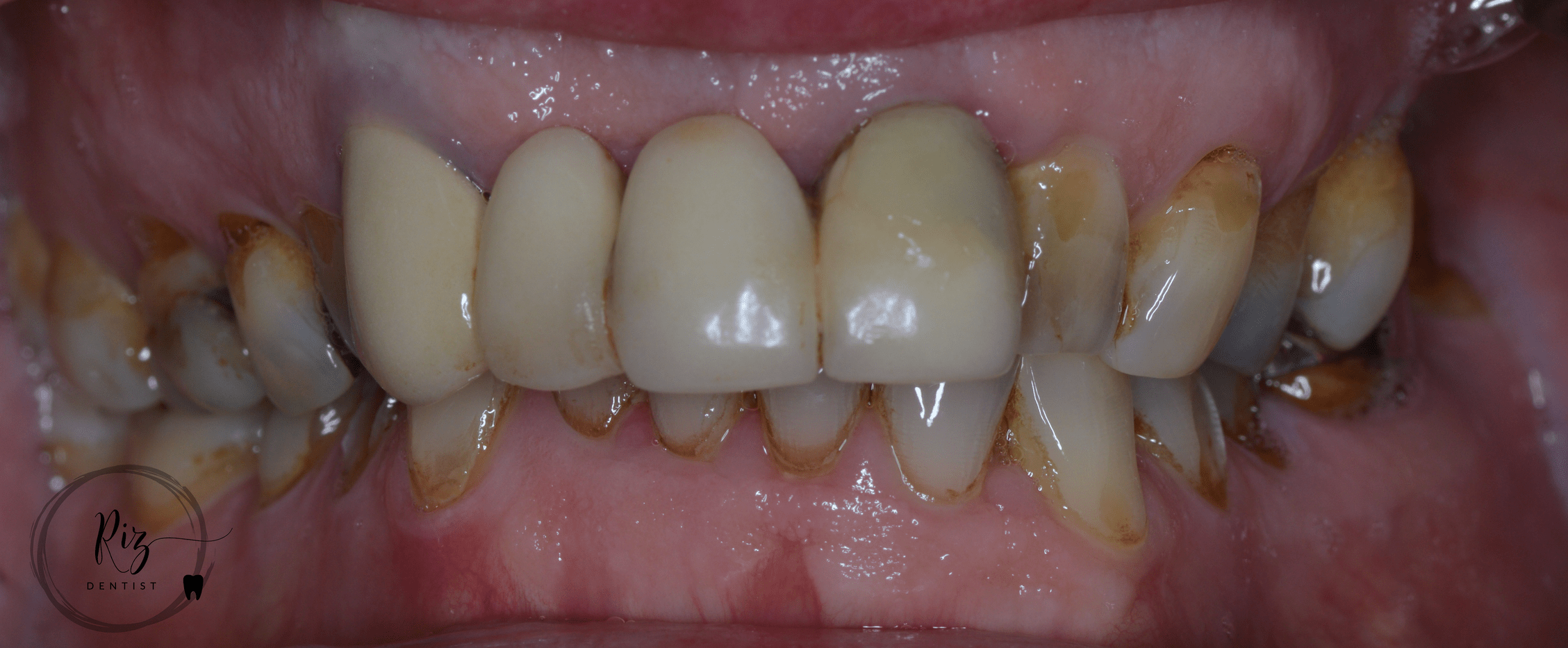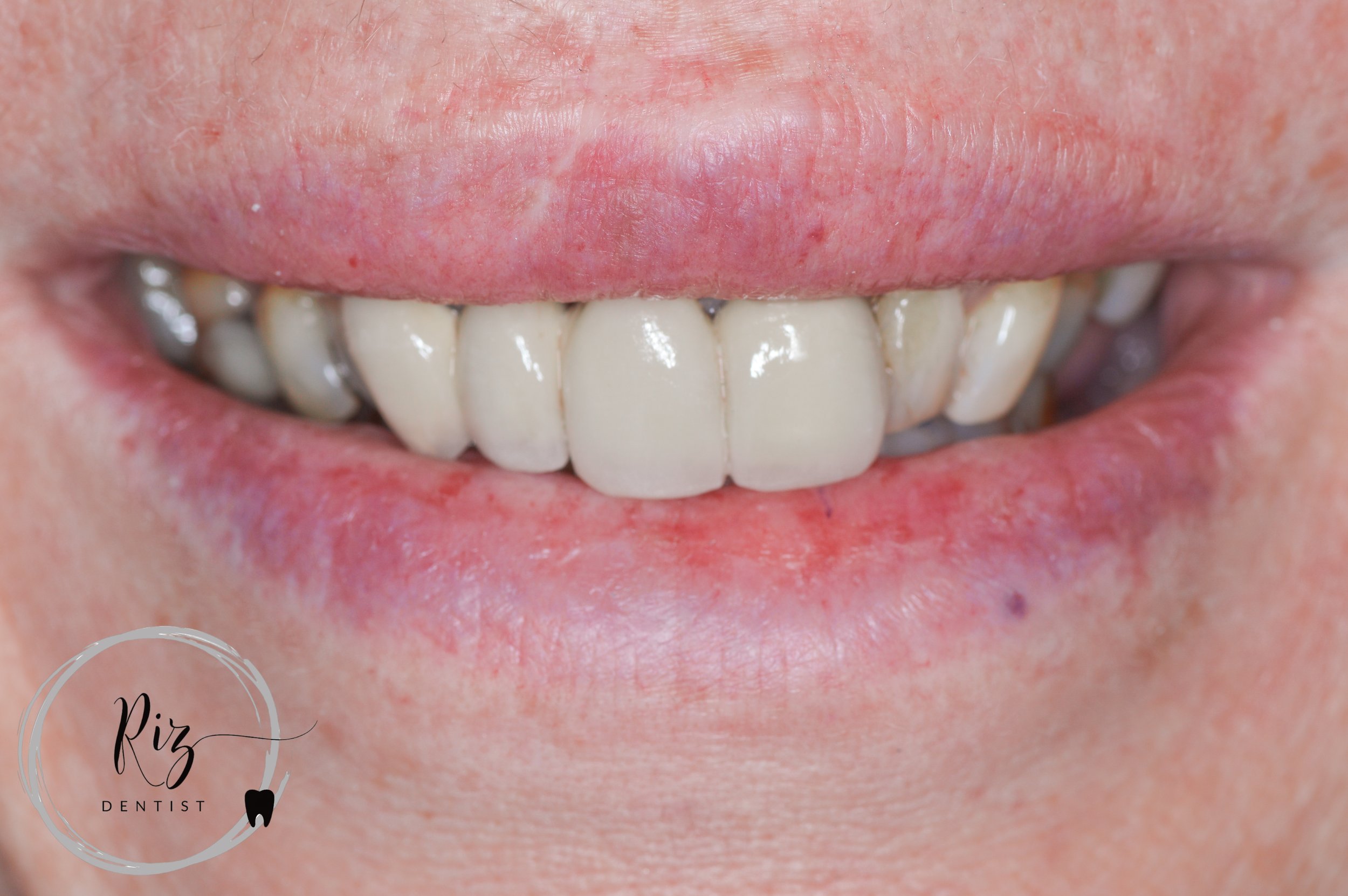Failing repaired bridge replaced to a pleasing smile
Patient's Initial Concern:
The patient had a long-standing upper front bridge that showed signs of deterioration.
Decay was evident on X-rays beneath the existing bridge, indicating a need for intervention.
Treatment Considerations:
Replacing old bridges can be challenging and risky because they may not always be replaceable in the same manner so may need a replacement with implants or dentures if the teeth under them were restorable once we remove it.
The patient was aware of the risks associated with removing the old bridge but was willing to take the risk to achieve a better outcome.
Treatment Process:
The old and deteriorating bridge was removed, which likely required careful and skilled dental work.
A new bridge was crafted to replace the old one. This process may have involved taking impressions, selecting appropriate materials, and creating a bridge that not only restored function but also enhanced aesthetics.
Outcome:
The final outcome of the treatment was described as "astonishing" and "much more aesthetically pleasing."
The new bridge was designed to complement the patient's facial features, resulting in a natural and harmonious appearance.
The patient was "exceedingly pleased" with the result, suggesting that their expectations were not only met but exceeded.
This case highlights the importance of a patient's willingness to take risks and a skilled dental professional's ability to provide a satisfying and aesthetically pleasing solution even in complex cases involving the replacement of deteriorating bridges.
Lab Credit
Patient's Initial Concern:
The patient had a long-standing upper front bridge that showed signs of deterioration.
Decay was evident on X-rays beneath the existing bridge, indicating a need for intervention.
Treatment Considerations:
Replacing old bridges can be challenging and risky because they may not always be replaceable in the same manner so may need a replacement with implants or dentures if the teeth under them were restorable once we remove it.
The patient was aware of the risks associated with removing the old bridge but was willing to take the risk to achieve a better outcome.
Treatment Process:
The old and deteriorating bridge was removed, which likely required careful and skilled dental work.
A new bridge was crafted to replace the old one. This process may have involved taking impressions, selecting appropriate materials, and creating a bridge that not only restored function but also enhanced aesthetics.
Outcome:
The final outcome of the treatment was described as "astonishing" and "much more aesthetically pleasing."
The new bridge was designed to complement the patient's facial features, resulting in a natural and harmonious appearance.
The patient was "exceedingly pleased" with the result, suggesting that their expectations were not only met but exceeded.
This case highlights the importance of a patient's willingness to take risks and a skilled dental professional's ability to provide a satisfying and aesthetically pleasing solution even in complex cases involving the replacement of deteriorating bridges.
Lab Credit
Patient's Initial Concern:
The patient had a long-standing upper front bridge that showed signs of deterioration.
Decay was evident on X-rays beneath the existing bridge, indicating a need for intervention.
Treatment Considerations:
Replacing old bridges can be challenging and risky because they may not always be replaceable in the same manner so may need a replacement with implants or dentures if the teeth under them were restorable once we remove it.
The patient was aware of the risks associated with removing the old bridge but was willing to take the risk to achieve a better outcome.
Treatment Process:
The old and deteriorating bridge was removed, which likely required careful and skilled dental work.
A new bridge was crafted to replace the old one. This process may have involved taking impressions, selecting appropriate materials, and creating a bridge that not only restored function but also enhanced aesthetics.
Outcome:
The final outcome of the treatment was described as "astonishing" and "much more aesthetically pleasing."
The new bridge was designed to complement the patient's facial features, resulting in a natural and harmonious appearance.
The patient was "exceedingly pleased" with the result, suggesting that their expectations were not only met but exceeded.
This case highlights the importance of a patient's willingness to take risks and a skilled dental professional's ability to provide a satisfying and aesthetically pleasing solution even in complex cases involving the replacement of deteriorating bridges.
Lab Credit



